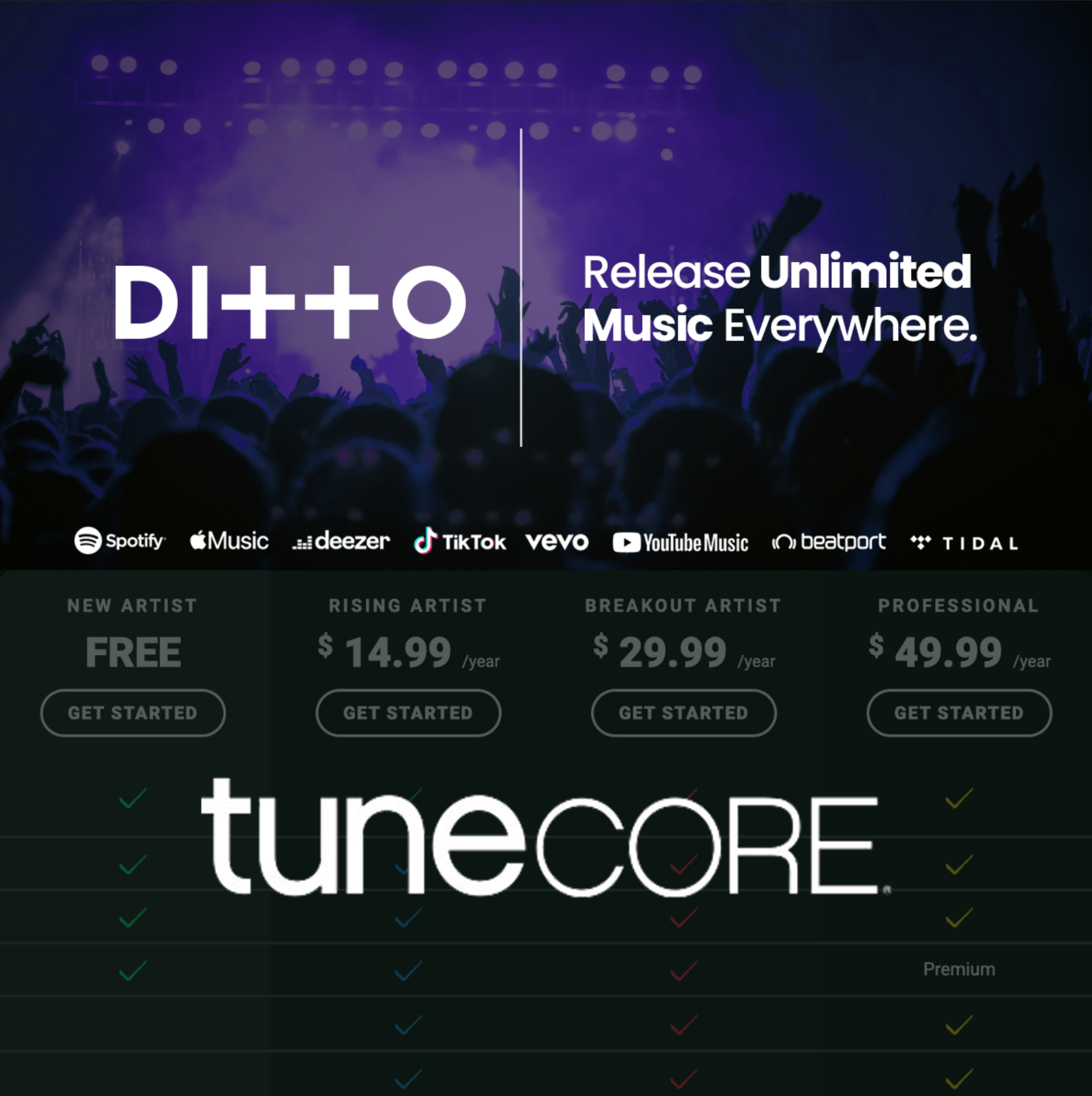Cover Art Requirements for Distributing Music through TuneCore and DittoMusic
Distributing music digitally has become more accessible through platforms like TuneCore and DittoMusic. However, to ensure your music is accepted and looks professional, it’s crucial to adhere to their cover art requirements. This article will detail the specific guidelines you need to follow for both services.
General Requirements
Both TuneCore and DittoMusic have similar general requirements for cover art. These include:
Format and Size:
- Format: JPEG, PNG
- Resolution: Minimum of 1600 x 1600 pixels and a maximum of 3000 x 3000 pixels.
- Color Mode: RGB color mode, not CMYK.
- File Size: Generally, less than 10 MB to ensure smooth uploading.
Content and Clarity:
- The image must be clear, not blurry or pixelated.
- Text and images should be easily readable and distinguishable.
- Avoid any visible pixelation or compression artifacts.
Text and Imagery:
- The cover art should not contain explicit content unless the music itself is labeled as explicit.
- It must not contain any contact information, pricing, or web addresses.
- No social media handles or mentions of any other websites.
- Avoid misleading text such as “New Release,” “Exclusive,” or similar terms.
TuneCore Specific Requirements
TuneCore provides a detailed set of guidelines to ensure your cover art meets their standards:
Image Quality:
- Ensure no additional borders around the edges of the cover art.
- Avoid any form of copyrighted images unless you have explicit permission.
- Logos or images of brands or other companies should not be included unless cleared.
Text Restrictions:
- Do not include references to physical packaging like “CD” or “Vinyl.”
- Avoid text suggesting the album is part of a compilation unless it truly is.
- Properly format titles and artist names to avoid rejection (e.g., correct capitalization).
Consistency:
- The cover art should match the metadata. The artist name, album title, and any featured artists listed on the cover should match the information provided during submission.
- No misleading or incorrect attributions.
DittoMusic Specific Requirements
DittoMusic also has stringent cover art guidelines to ensure professionalism and compliance:
Branding and Copyright:
- Similar to TuneCore, DittoMusic requires that no copyrighted material be used without permission.
- No usage of company logos, trademarks, or branding without explicit permission.
Explicit Content:
- Explicit content must be marked accordingly. If your cover art contains explicit images, ensure the music is marked explicit as well.
- Avoid graphic or violent images that could be considered offensive.
Technical Specifications:
- Ensure the cover art is square, with equal height and width.
- Maintain a high-quality image without any pixelation or blurring.
Visual Consistency:
- The visual presentation should reflect the genre and style of the music.
- Avoid using images that do not correlate with the music’s theme or genre.
Best Practices for Creating Cover Art
To ensure your cover art meets all necessary requirements, here are some best practices:
Professional Design:
- Consider hiring a professional graphic designer if you lack the skills to create high-quality cover art.
- Use design tools like Adobe Photoshop or Illustrator to create precise and polished images.
High-Resolution Images:
- Use high-resolution images to ensure clarity and avoid pixelation.
- Ensure all elements of the cover art are legible, even when scaled down.
Review and Revise:
- Before submitting, double-check all text for spelling errors and ensure it matches the metadata.
- Get feedback from peers or fans to see if the cover art effectively represents the music.
Legal Considerations:
- Ensure all images and fonts used are either original or licensed appropriately.
- Avoid any potential legal issues by not using copyrighted material without permission.
Wrapping Up
Adhering to the cover art requirements of platforms like TuneCore and DittoMusic is essential for a successful music release. Following the specified guidelines ensures that your cover art looks professional, meets industry standards, and avoids potential rejection or delays in the distribution process. By investing time in creating high-quality cover art, you enhance the visual appeal of your music and contribute to a more professional and engaging release, hopefully resulting in increased streaming and sales performance.

